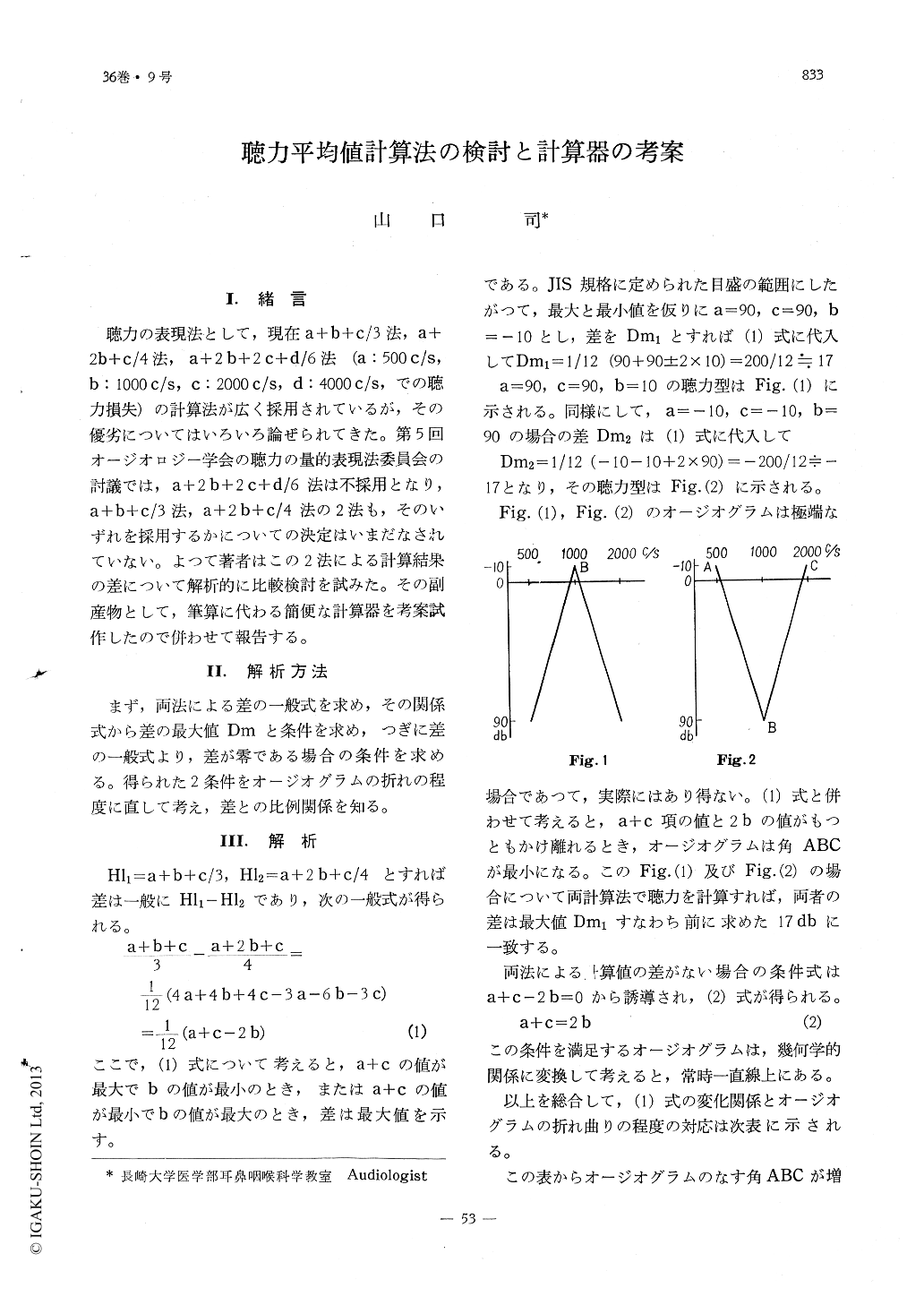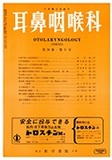Japanese
English
- 有料閲覧
- Abstract 文献概要
- 1ページ目 Look Inside
Ⅰ.緒言
聴力の表現法として,現在a+b+c/3法,a+2b+c/4法,a+2b+2c+d/6法(a:500c/s,b:1000c/s,c:2000c/s,d:4000c/s,での聴力損失)の計算法が広く採用されているが,その優劣についてはいろいろ論ぜられてきた。第5回オージオロジー学会の聴力の量的表現法委員会の討議では,a+2b+2c+d/6法は不採用となり,a+b+c/3法,a+2b+c/4法の2法も,そのいずれを採用するかについての決定はいまだなされていない。よつて著者はこの2法による計算結果の差について解析的に比較検討を試みた。その副産物として,筆算に代わる簡便な計算器を考案試作したので併わせて報告する。
The formulae which are employed for average calculation of hearing acuity are a+b +c/3, a+2 b+c/4 and 2 b+2 c+d/6 with a, representing 500 c/s hearing loss b, 1000 c/s, c 2000 c/s, and d, that of 4000c/s. The relative merits of each formula are widely discussed. At the society meeting of Japan Audiological Society in 1963, it was decided that the last formula a+2 b+2 c+d/6 should not be used; no definite rulings effected the other two.
The author has studied the two method by mathematical calculations and found the significance of the difference of results among them. As a by-product of this study the author has designed a special slide rule with which average hearing losses are calculated by simple manipulaion.

Copyright © 1964, Igaku-Shoin Ltd. All rights reserved.


